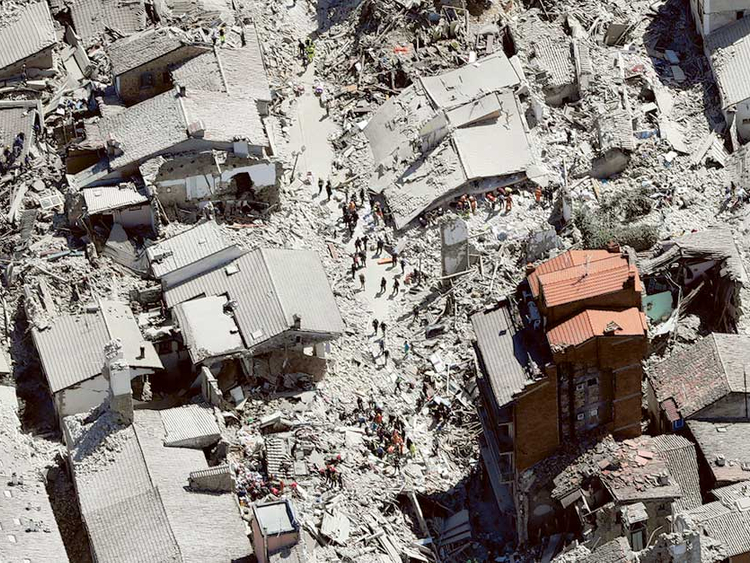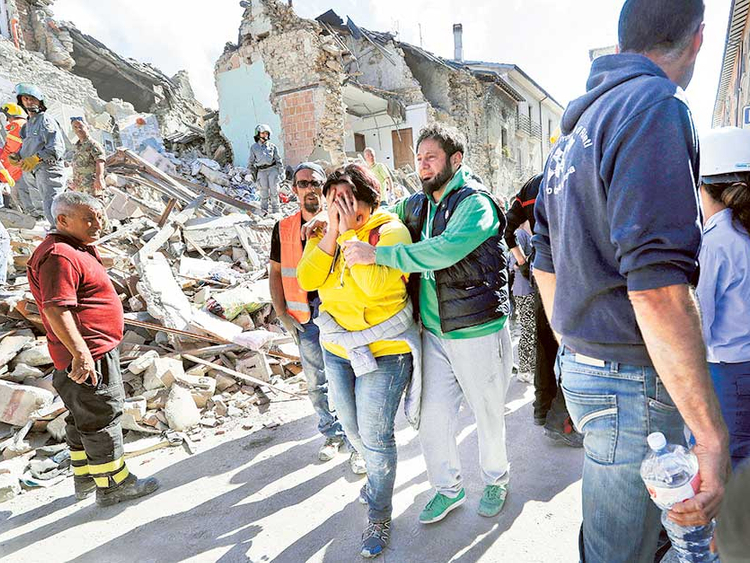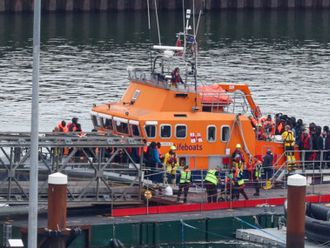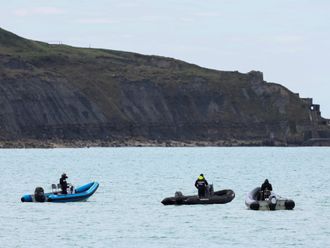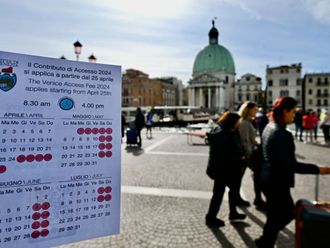
ACCUMOLI, Italy: With many people still missing, the death toll from a devastating earthquake in central Italy rose sharply to almost 250 people early on Thursday after rescue teams worked through the night to try to find survivors under the rubble of flattened towns.
The provisional toll jumped to 247 from the 159 dead listed on Wednesday night, national and regional officials said as a wave of aftershocks rattled a cluster of mountain communities 140 km (85 miles) east of Rome.
The strong 6.2 magnitude quake struck early on Wednesday as people slept, razing homes and buckling roads. It was powerful enough to be felt in Bologna to the north and Naples to the south, both more than 220 km (135 miles) from the epicenter.
The sun rose on Thursday on many people who had slept in cars or tents, the earth continuing to tremble under their feet. Two powerful aftershocks registered 5.1 and 5.4.
Officials said the death toll seemed destined to rise further.
The toll appeared likely to surpass that from the last major quake to strike Italy, a temblor that killed more than 300 people in the central city of L'Aquila in 2009.
Many still missing, hundreds hospitalised
At least 368 injured people had been taken to hospital by late on Wednesday, Prime Minister Matteo Renzi said.
One hotel that collapsed in the small town of Amatrice probably had about 70 guests and only seven bodies had been recovered so far, said the mayor of the one of the worst-hit towns.
Scores of buildings were reduced to dusty piles of masonry in communities close to the epicentre of the quake, which had a magnitude of between 6.0 and 6.2, according to monitors.
It hit a remote area straddling Umbria, Marche and Lazio, to the north of a region devastated by a quake in 2009, rousing residents and vacationers in terrifying fashion.
Italy’s civil protection unit said there had been 38 deaths in and around the villages of Amatrice, Accumoli and Arquata del Tronto.
“There are still so many people under masonry, so many missing,” said Immacolata Postiglione, the head of the unit’s emergency department.
“My sister and her husband are under the rubble, we’re waiting for diggers but they can’t get up here,” Guido Bordo, 69, told AFP in the tiny village of Illica, near Accumoli.
“There’s no sound from them, we only heard their cats. I wasn’t here, as soon as the quake happened I rushed here. They managed to pull my sister’s children out, they’re in hospital now,” he added, anxiously clasping and unclasping his hands.
Other victims included a nine-month-old baby whose parents survived.
The central Italian region was struck by an earthquake yesterday, causing buildings to collapse as residents slept. The area is located some 150km from Rome, and rescuers struggled to help the stunned injured and survivors. AP
But two other children aged four and seven were saved by their quick-thinking grandmother, who ushered them under a bed as soon as the shaking began, according to reports.
It was Italy’s most powerful earthquake since 2009, when some 300 people died in and around the city of L’Aquila, just to the south of the area hit on Wednesday.
Prime Minister Matteo Renzi cancelled a planned trip to France for a meeting with European Socialist leaders and other engagements to oversee the response to the disaster.
“The situation is dramatic, there are many dead,” said Amatrice mayor Sergio Pirozzi. “Half the village has disappeared.”
Pope Francis interrupted his weekly audience in St Peter’s Square to express his shock.
“To hear the mayor of Amatrice say his village no longer exists and knowing that there are children among the victims is very upsetting for me,” he said.
Civil Protection chief Fabrizio Curcio classed the quake as “severe”. The shocks were strong enough to wake residents of central Rome, some 150 kilometres (90 miles) away.
The worst damage was suffered by Pescara del Tronto, a hamlet near Arquata in the Marche region which “just completely disintegrated”, according to local mayor Aleandro Petrucci.
Ten bodies had been recovered there by midday and rescuers were braced for further fatalities.
Accumoli mayor Stefano Petrucci fought back tears as he described the scenes as “a tragedy.”
“There are people under the ruins, it is not a good situation.”
Amatrice is a hilltop beauty spot famed as the home of amatriciana, one of Italy’s favourite pasta sauces, and is a popular destination for Romans seeking cool mountain air at the height of the summer.
It was packed with visitors when the quake struck at 3.36am GMT [7.36am UAE time].
Three minutes later, the clock on the village’s 13th-century tower stopped.
The first quake measured 6.2, according to the United States Geological Survey (USGS), which said it occurred at a shallow depth of 10 kilometres. It measured 6.0 according to Italian monitors.
A 5.4-magnitude aftershock followed an hour later.
In 2009, a 6.3-magnitude earthquake struck close to the university city of L’Aquila in the Abruzzo region and left more than 300 people dead.
That disaster led to lengthy recriminations over lax building controls and the failure of authorities to warn residents that a quake could be imminent.
David Rothery, Professor of Planetary Geosciences at Britain’s Open University, said Wednesday’s quake had been similar to the 2009 one.
“Both occurred at a shallow depth, which exacerbates the shaking at the surface,” he said.
“Unlike the L’Aquila quake, which was preceded by swarms of smaller quakes and led to claims — unjustified in my view — that the eventual big quake should have been predicted, this one appears to have struck out of the blue.”
Italy is often shaken by earthquakes, usually centred on the mountainous spine of the boot-shaped country.
Another quake hit the northern Emilia Romagna region in May 2012, when two violent shocks 10 days apart left 23 people dead and 14,000 others homeless.




